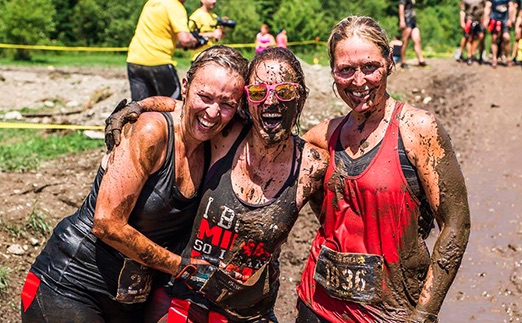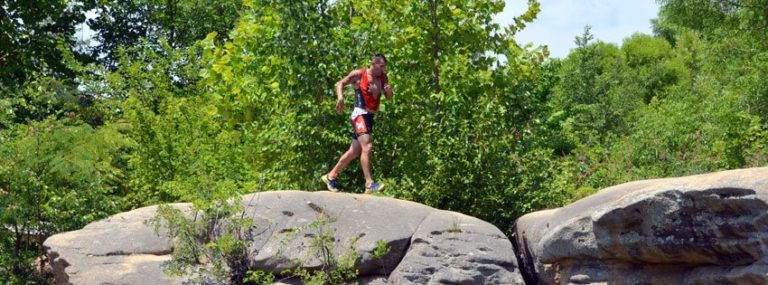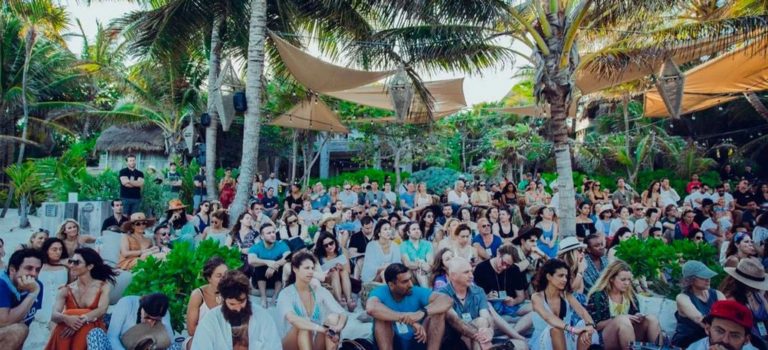
Mike Reilly is undoubtedly one of the most respected names in the business of endurance, and over the last 35 years he has been a fixture in the sport. Announcing at over 1,000 events worldwide going back to the late ’70s, he’s a member of the Ironman Hall of Fame and is affectionately referred to as the “Voice of Ironman”. He has greeted over 200,000 athletes as they crossed the finish line with his iconic line, “You are an Ironman.” Reilly has found incredible success away from the microphone as well. He and his wife Rose started RACEPLACE Magazine in 1984, which is now operated by his son Andy and is still the number one destination for people looking for endurance events in Southern California. He was also one of the original 10 employees at Racegate, which was founded by Mitch Thrower (founder of Events.com) and Scott Kyle of Triathlete Magazine in 1999. Racegate went on to become Active Network, where Reilly spent the following 15 years as Head of Sales. In 2014, he joined Events.com and serves as the Executive Vice President of Global Sales. Our COO, Greg Spillane, sat down to interview Mike Reilly about his thoughts on the evolution of the endurance industry and where he sees things going next.
GS: After being in the industry for over 35 years, I’m sure you have seen a tremendous amount of change and growth as a whole in the business behind these events. Can you discuss both the constants and changes you’ve seen in the industry? MR: There has been one constant in events and it’s been there since my very first event: the shared passion for endurance sports and a finish line. People want to get to finish lines in their lives, and they want to get to a finish line in a running race, triathlon, or a cycling event. It’s always been the same. The smiles are the same, the passions are the same, and people screaming and yelling is the same. The event director that can take advantage of that and bottle it up, whether it’s through social media or contacting the participant after the race about their experience, is the event director that stays up with the times and does not put the same event on that they put on 15 years ago. Event participants want to be recognized and congratulated – some of the older time event directors did not do that, but today it needs to be done. So, even though everything has been the same at the finish line with the passion, it’s how the event director stays up with the times and interacts with their constituents that will keep growing their event. The biggest form of advertising their event is that runner telling fellow runners, “You have to do this race!”
GS: What are some of the qualities of those event directors that continue to evolve? I assume a lot of event directors began as participants or enthusiasts, people that love the sport. So, it starts as a hobby for them and before you know it, there is an organization that needs to be run. Some people are able to make that work and transition to having long-running successful events and for others, it causes their event to fizzle. What makes certain people be able to make it work and others don’t? MR: From the onset, event directors that have put on running races or triathlons have been one or two-person operations, with a lot of husband and wife teams. Their events began to grow as the growth of endurance as a whole was happening. The event director today, the smart ones, have a team around them to pull in every person they can for their event and gives their participants an experience they can remember. The toughest part about event directing today is that it’s a weekend business; it’s a thankless business that is every hour of every day of the year. The ones that have fallen by the wayside are the ones that are trying to do it by themselves. If you don’t surround yourself with a modern team who knows what experience athlete wants today, then you are going to fail. The competition is intense out there; there are a lot of good events, but not a lot of great events. And, the great events are the ones that people want to keep going to. It really is a fine line between being an event director and being an event manager. Rick Nealis of Marine Corp Marathon is a master at this. On race day, he is in the sponsor tent having a beer with the sponsors and talking to the runners at the finish line, he has already done his work and his team is producing the race for the day. He does exactly what he should be doing – talking to the sponsors, talking to the constituents, and talking to the runners. That is what an event director should be doing on race day.
GS: How big of a part does technology and technology partners play in events these days? MR: Technology is critical today. There are a lot of things that can be done with the technology for an event that can enhance an event and can save the event director a lot of time and a lot of money. Most event directors are never going to bring in their own IT person or their own UI person, so they will need partners in it. The other critical thing is being modern; for example, being up to date with your social media. The mud obstacle events really got themselves going through social media and I see the traditional running market and a lot of the triathlon market have not learned how to bring in Facebook and Twitter followers to their event. They set up a Twitter account and a Facebook page and think that people will just come. It is like opening a retail store, putting up your store hours, and just waiting for people to come – it doesn’t happen. Events that have ten and twenty thousand participants don’t have many followers. So, what they are doing is putting on an event, doing something to bring people in on race day, but they most likely don’t have” a stickiness” for the participants to the event. The numbers remain stagnant year after year, but there are other events that are growing and taking runners away from these events because they are learning how to engage with their participants through social media. So, what I think these events need is to look for most in technology partners is resources within that business that can help their event and give direction and advice.
GS: I know the industry, as a whole, continues to grow. Running is fairly flat though and most of the growth that we’re seeing right now is in mud and obstacle. I’m sure that over your time in the industry, you’ve seen a lot of different trends. I’m interested in hearing some of the different trends that got really popular. What do you see happening over the next couple of years in the industry? MR: One of the trends in running was distances. It was very popular at one time to put on a 5k race because it was an easy race for an event director to put on. Plus, it appealed to a lot more people out there because, “I can walk a 3-mile race, I can do that.” Those are still popular in a way, but then the 10k became very popular when the running boom hit in the 80’s. Today, it’s the half-marathon distance. Another trend in the business was the influx of the charitable causes. So, these people weren’t exactly fast marathoners, the were participants and event goers. They increased the numbers of participants in races dramatically.
GS: Talk about global – you spent a lot of your career travelling to different locations around the world, especially as The Voice of Ironman. I’d be interested in hearing your thoughts about the growth of the sport globally. MR: The global aspect, I’ll start with Australia and New Zealand. The reason I’ll start there is because I think they, endurance-wise, are light years ahead of the U.S. Kids grow up there working out. It’s a part of the fabric of the school network. Everybody swims, everybody loves running cross country – they are just an endurance nation in Australia and Canada. World-class runners are coming from these countries and it is because of the way these people grew up. So, the event business flourished down there. It was the participants who were pushing, “We want more events!” So, crazy events like the Southern Traverse across all of New Zealand came about. I don’t know if people realize this, the first Ironman was Hawaii, the very second was New Zealand, and the very third was Australia. Those are the three oldest Ironmans. And when I went down there for the first time for the Ironman in ’93, I was all of a sudden catapulted into a national sport of the country. It was like I was calling a Major League Baseball Game. Europe, to some extent, is the same. It’s so much bigger over there.
GS: What are some of the considerations that races should take into account as they look at potentially expanding their events globally? If you want to have a global event, you first have to have a global team in that region that knows the region as well as you know your hometown. And, you have to listen to that global team. And, most importantly, you must respect that region.






